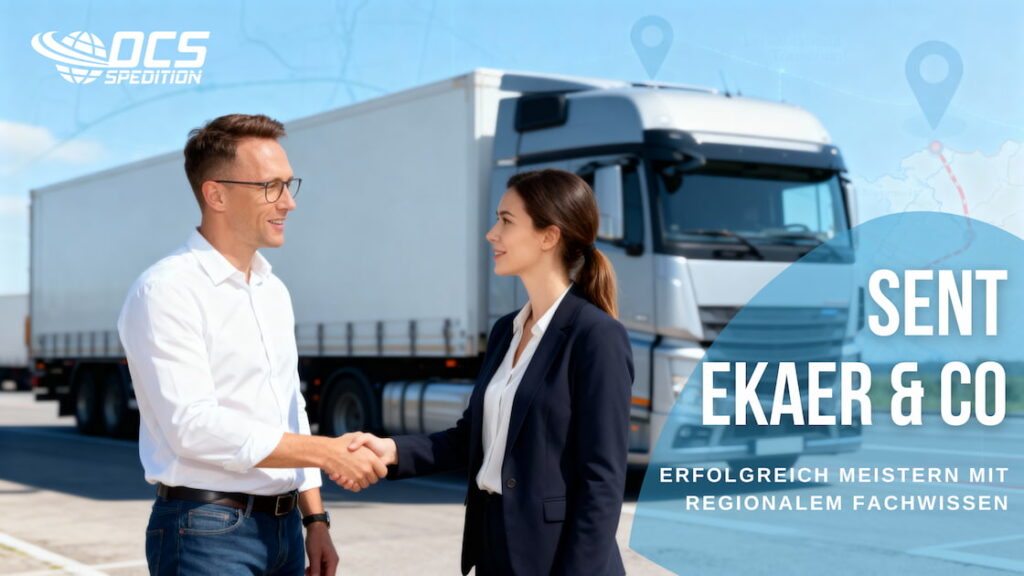The EU Commission brought in a pioneering proposal last week: the toll exemption for e-trucks is to be made possible by 2031 at the national level. And this does not make a direct money pot - it is not a subsidy in the classic sense - and yet this step sets a strong signal: If you switch now, you may save money. Because freight forwarders are efficiently driven: if it is cheaper, it will be done. The planned toll exemption can take care of this - it significantly reduces the operating costs and makes switching to battery -electrical trucks economically attractive.
Toll exemption - a smart incentive instead of subsidy
Many think of grants immediately when funding - money flows. But the EU strategy looks different: it relieves it through toll exemption, avoids inefficient capital distribution and simultaneous bureaucracy. The message is clear: "Invest, and benefit in the long term!" This strengthens the willingness to buy.
But how big is the savings potential? Let us do the example of a typical freight forwarder in Germany.
Mauters saving for German freight forwarders in freight transport
The central instrument to promote the switch to battery -electric trucks should be the toll saving - and that is exactly what makes this approach so effective. Unlike classic funding programs in which companies have to make time -consuming, submit evidence and have to wait for permits, the toll exemption works easily, automatically and unbureaucratically . It applies directly to use and reduces running operating costs without creating additional administrative effort. This is a decisive advantage, especially in a strongly tackled everyday life - because not every company has the personnel resources to deal intensively with funding guidelines and application procedures.
Sample calculation
In order to make the potential tangible, it is worth taking a look at a realistic calculation example: a typical heavy truck in national freight transport runs around 100,000 kilometers . Of this, around 80 % of this - in a typical route mix in Germany - on roads that are subject to tolls , i.e. 80,000 kilometers per year .
Since July 2024, new toll rates have been in Germany that vary depending on the weight, emission class and axis number. For modern vehicles of the Euro VI with four axes, the set is currently around 0.316 euros per kilometer . If you collect this annual performance that is subject to tolls, there is an annual load of 25,280 euros per vehicle .
If this sum is omitted by switching to a battery-electric drive, this means an annual saving of this amount for each E-vehicle used- and is expected to be implemented by the end of 2030 , provided the EU proposal is implemented as planned.
For companies who are looking for optimization options in an already tense cost structure, this relief is a clear argument with economic logic . Because freight forwarders do not decide according to ideology, but according to efficiency. And: If a technology like E - truck works in everyday life and pays off at the same time, the change comes by itself .
Operating costs in everyday life - electricity strikes diesel
In addition to the toll exemption, one factor is primarily crucial for the economic success of electric trucks: operating costs . And this shows a surprisingly clear advantage on a closer look - especially when companies rely on their own charging infrastructure.
A typical electric truck consumes around 100 kilowatt hours of electricity over 100 kilometers. With an annual mileage of 100,000 kilometers, this results in an energy requirement of 100,000 kWh per vehicle. If - as with many freight forwarders with a fixed location - about 80 % of this need can be loaded in their own depot, the electricity costs can be significantly reduced. In practice, around 15 cents per kilowatt hour are calculated for your own production or the connection via long -term contracts. For the remaining 20 %, we simply assume that you have to be reloaded at public charging points. We estimate the costs for this at around 50 cents per kilowatt hour.
If one calculates this mixture, there will be electricity costs of 12,000 euros (for the 80,000 kWh in the depot) and 10,000 euros (for the remaining 20,000 kWh on the move). All in all, around 22,000 euros per year and vehicle for energy.
For comparison: a conventional diesel truck consumes about 28 liters of diesel per 100 kilometers in long-distance transport. With 100,000 kilometers of annual mileage you get around 28,000 liters. , annual fuel costs of 42,000 euros result -more than twice as much as for electric trucks.
The saving in energy costs alone is around 20,000 euros per year and vehicle . If you combine this number with the previously calculated toll saving of around 25,280 euros, there is an impressive total advantage: around 45,000 euros annually remain more in the cash register for an electric truck-and that, mind you, without considering further effects such as less maintenance costs, enthusiastic drivers or positive image.
These numbers speak a clear language: Those who are structurally prepared and create charging options at their own location can score not only ecologically, but also economically with a battery -electric truck. It is no wonder that more and more companies venture into the start - the framework conditions for it were rarely as cheap as it is now.
Where the change still stops: infrastructure & power origin
As convincing as the economic arguments for the e-truck are-a real breakthrough only succeeds if the external conditions grow. And this is exactly where one of the biggest challenges is currently.
A central problem is the massive lack of parking for trucks . Depending on the source, between 20,000 and 23,000 parking spaces -especially along important transitaks and in metropolitan areas such as the Rhine-Main area. The result: more and more trucks have to pause on hard shoulder or access - a state that is not only uncomfortable, but acute at risk of safety . Anyone who has ever driven past a standing truck on the side strip at high speed can imagine how risky such situations become for the drivers - not to mention the statutory rest periods that can hardly be observed under such conditions.
In addition, there is no charging point without a parking lot. While deposit loads already work well today - especially on regional tours - the construction of a powerful charging infrastructure along the long -distance routes has so far only been carried out. In urban regions such as Frankfurt, many parking spaces are overloaded anyway- free parking spaces with a quick charging function for e-trucks are practically non-existent . Without targeted investments in so-called high-power loaders along the main axes, battery-electric long-distance traffic will remain difficult to be scalable.
How green is the electricity really?
Another topic that is often neglected in the discussion is the actual origin of the electricity that drives the e-trucks. Although the proportion of renewable energies in the German electricity mix is now around 50 percent , but this is guaranteed not to consistently clean.
In phases with high consumption - for example in the evening or in the event of wind, electricity from fossil sources must continue to be used. This means that an e-truck also causes CO₂ emissions if it is loaded at such moments-just not on the exhaust, but indirectly over the energy mix. The average emissions per kilowatt hour fluctuate significantly and in critical times extend far below the green potential that is actually in technology.
Therefore: the greener the electricity, the more environmentally friendly the e-truck operation. Anyone who works with solar power in their own depot or uses specifically using green electricity tariffs can significantly reduce the ecological footprint of their fleet - not only in the external impact, but also measurable in the climate balance.
The year of the decision: why is the right time now
The pressure to establish sustainable solutions in road freight transport At the same time, the starting point for companies was rarely as cheap as it is today. Because the combination of economic advantages, technological maturity and political tailwind makes switching to E -truck more attractive than ever.
What currently speaks for the decision:
-
Maut exemption until 2031 : around € 25,280 savings per year and vehicle
-
Cheaper use of energy : up to € 23,000 per year with deposit charge
-
More driving comfort & flexibility : silent driving, stand climate, night trips possible
-
Technology openness : market opening via incentives instead of bans
However, there are also clear homework:
-
Charging infrastructure along the long -distance traffic network must be expanded quickly
-
Lack of parking space remains critical - 20,000 to 23,000 new parking spaces are necessary anyway - the lack of charging infrastructure is not yet included
-
Electricity mix has to become greener in the long term in order to develop full environmental effects
OCS compass: Why do we believe in it
For us at OCS it is clear: E -trucks are technological innovation and environmental protection in one. But only with intelligent political tools such as the toll exemption does the necessary movement incentive arise. We expressly welcome this step of the EU Commission.
At the same time, we rely on technology openness : where E-truck (yet) is not (yet) economically or technically sensible- as in European long-distance traffic without charging infrastructure or only to significant uneconomical prices- other options (e.g. hydrogen or hybrid solutions) could make sense in the long term.
Closing word
With the toll exemption for E -truck, the EU takes a step towards sustainable traffic. The combination of financial savings, driver comfort and eco-impact is convincing-provided that politics and business deliver charging infrastructure and parking space.
This is more than a trend reversal for OCS - it is strategic future design. We rely on the clever connection of electric transport, green energy and market -oriented impulses. The change is not achieved through prohibitions, but through opportunities-and this opportunity has grown significantly with the current EU proposal.





